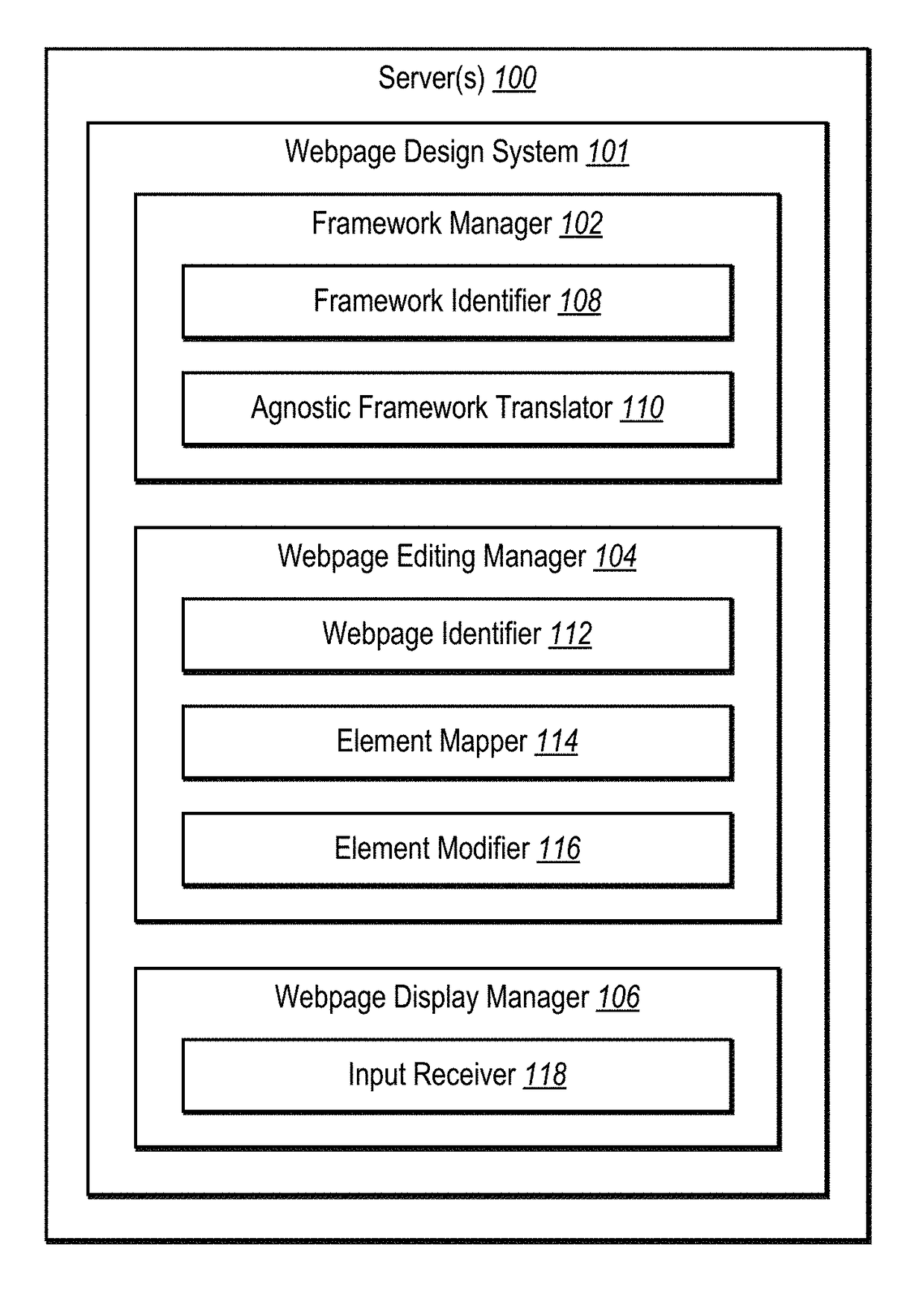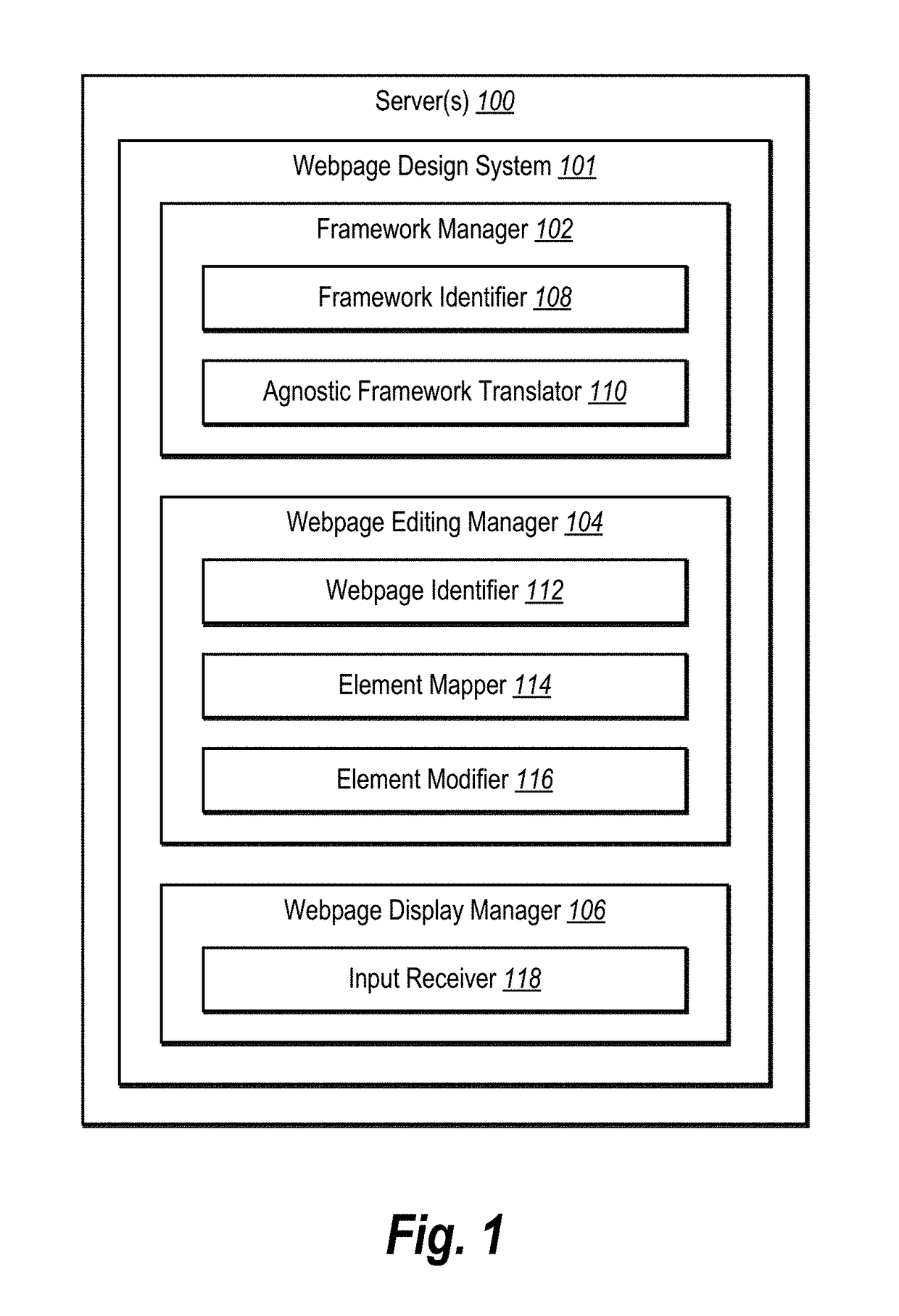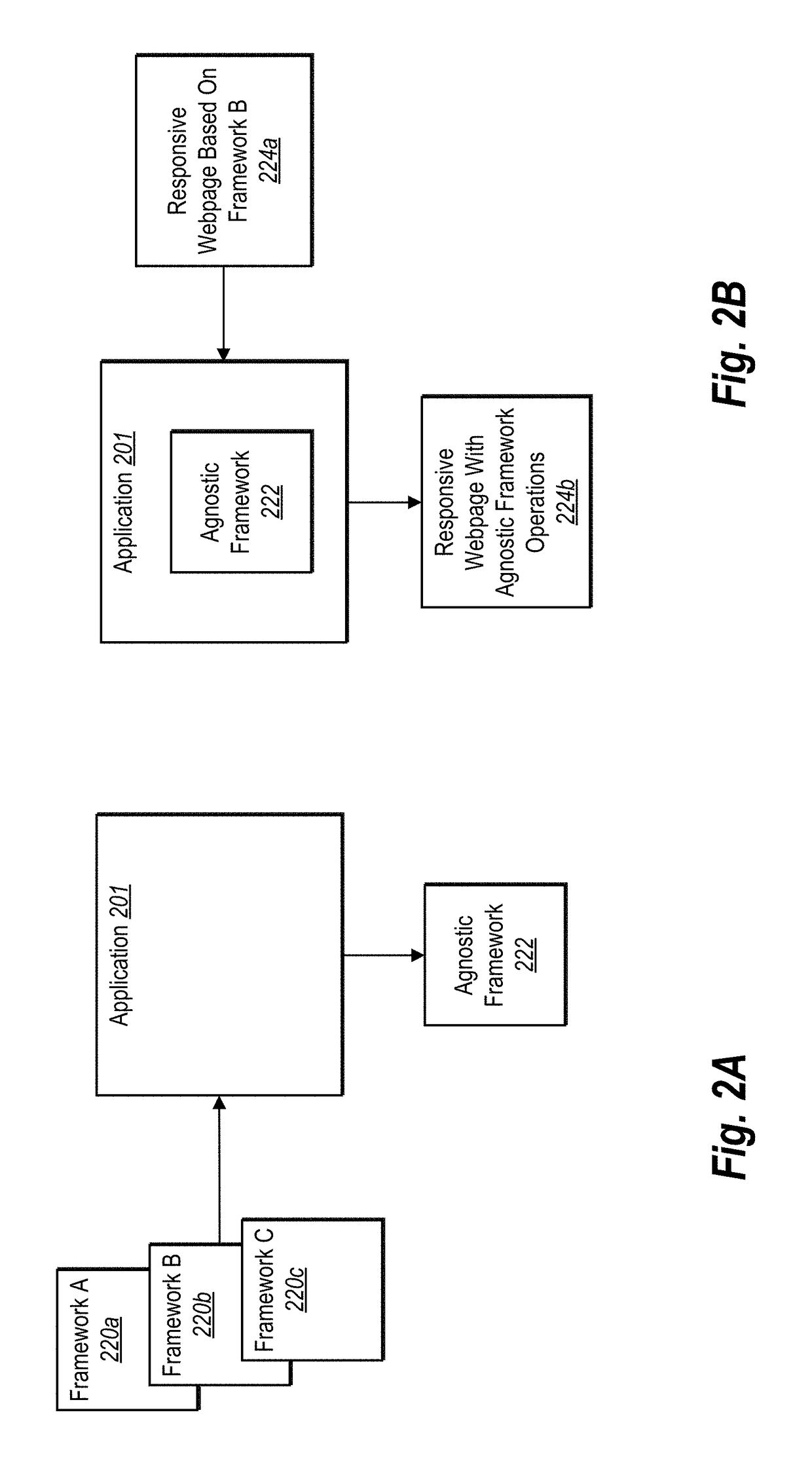Supporting webpage design and revision irrespective of webpage framework
a webpage framework and webpage technology, applied in the field of editing webpages, can solve the problems of not improving the user experience, limiting the user's follow-up of expressions, and using a web design program
- Summary
- Abstract
- Description
- Claims
- Application Information
AI Technical Summary
Benefits of technology
Problems solved by technology
Method used
Image
Examples
Embodiment Construction
[0025]One or more embodiments of the present disclosure include a webpage design system that enables a user to agnostically edit responsive webpages irrespective of the responsive framework used to create the responsive webpage. In particular, in one or more embodiments, the webpage design system converts responsive frameworks into an agnostic responsive framework. Once the webpage design system generates the agnostic responsive framework, the webpage design system can enable a user to modify a responsive webpage using expressions and operations of the agnostic framework irrespective of the specific responsive framework used to create the responsive webpage. The webpage design system can further apply modifications provided by a user to the responsive webpage using the responsive framework to which the responsive webpage corresponds.
[0026]To illustrate, a user may need to modify a number of responsive webpages. Some of the responsive webpages may correspond to one responsive framewo...
PUM
 Login to View More
Login to View More Abstract
Description
Claims
Application Information
 Login to View More
Login to View More - R&D
- Intellectual Property
- Life Sciences
- Materials
- Tech Scout
- Unparalleled Data Quality
- Higher Quality Content
- 60% Fewer Hallucinations
Browse by: Latest US Patents, China's latest patents, Technical Efficacy Thesaurus, Application Domain, Technology Topic, Popular Technical Reports.
© 2025 PatSnap. All rights reserved.Legal|Privacy policy|Modern Slavery Act Transparency Statement|Sitemap|About US| Contact US: help@patsnap.com



